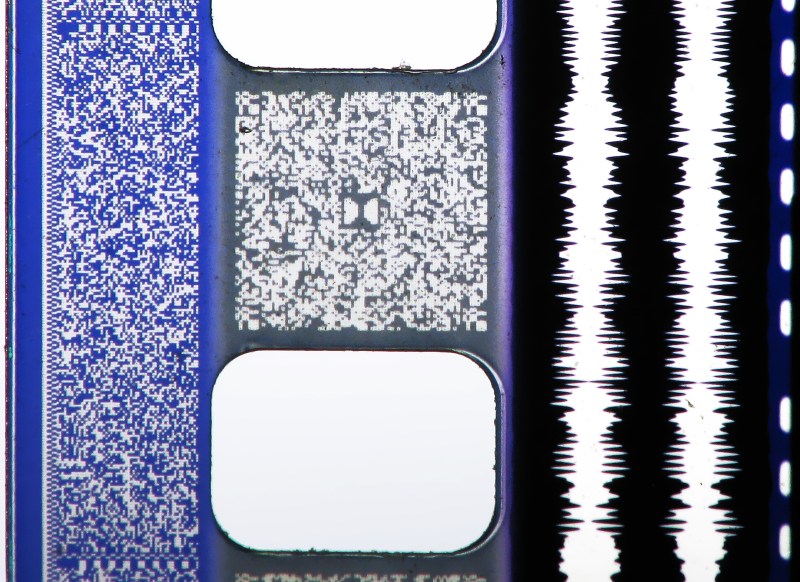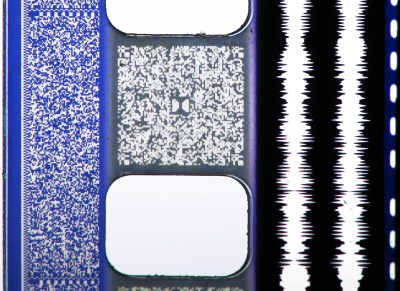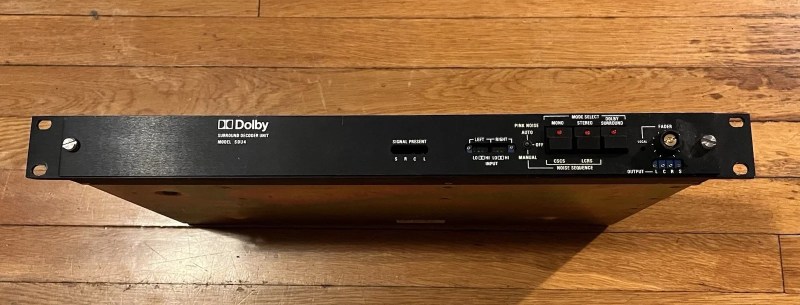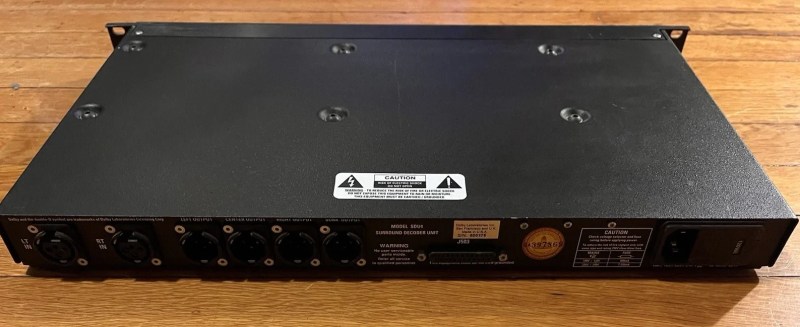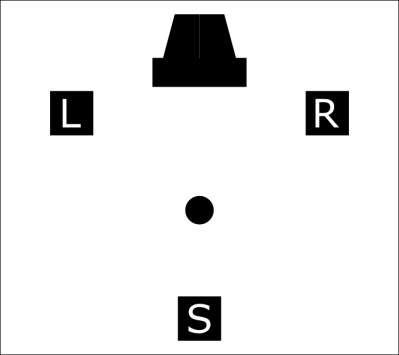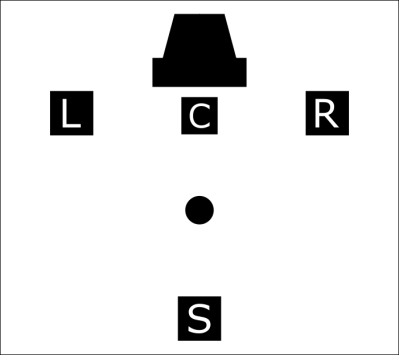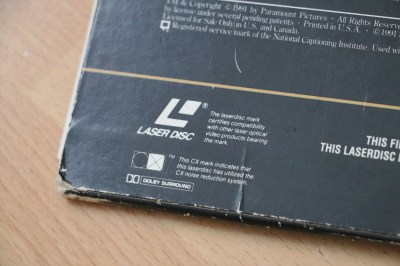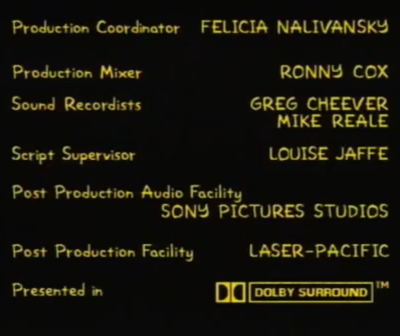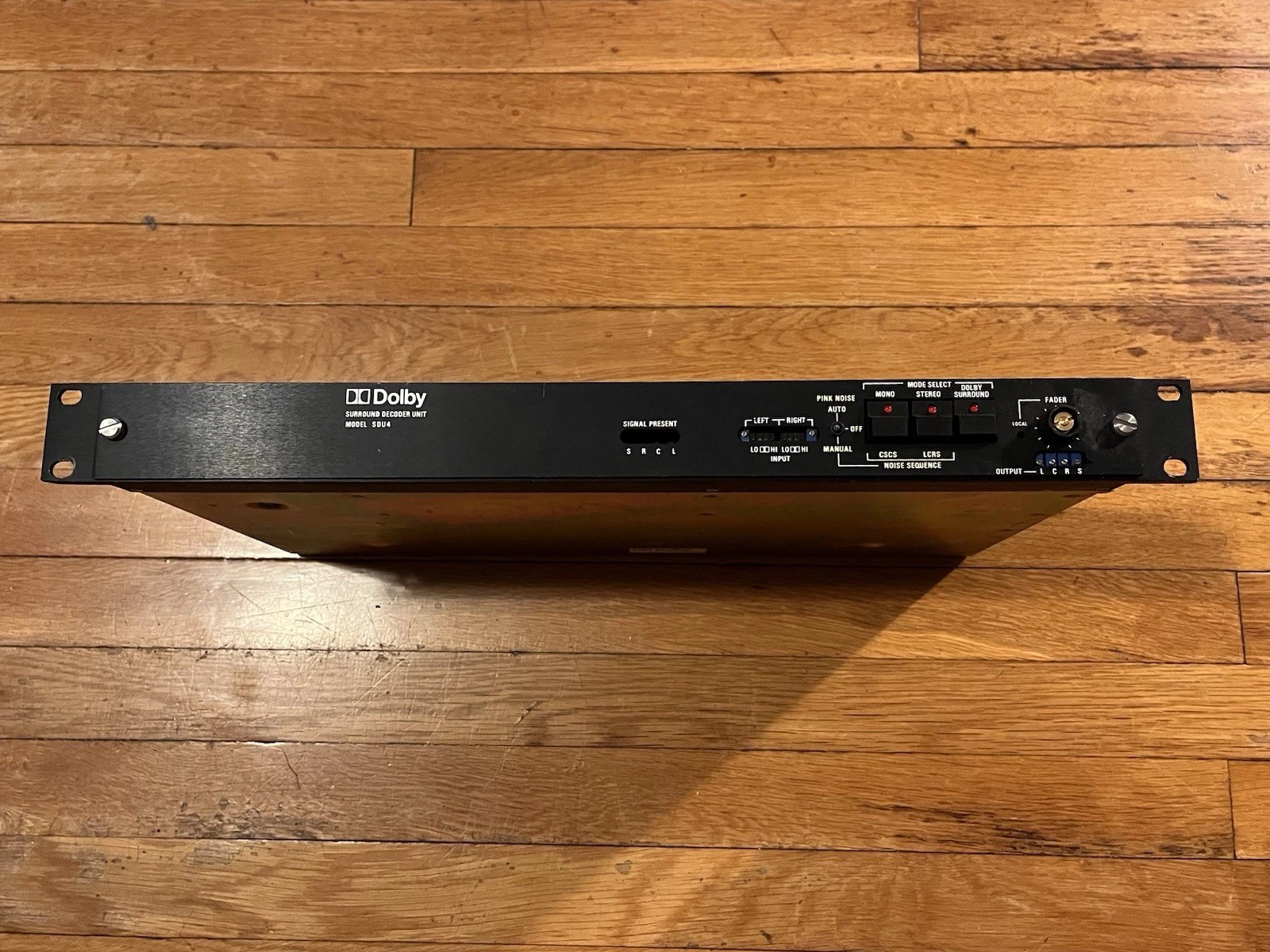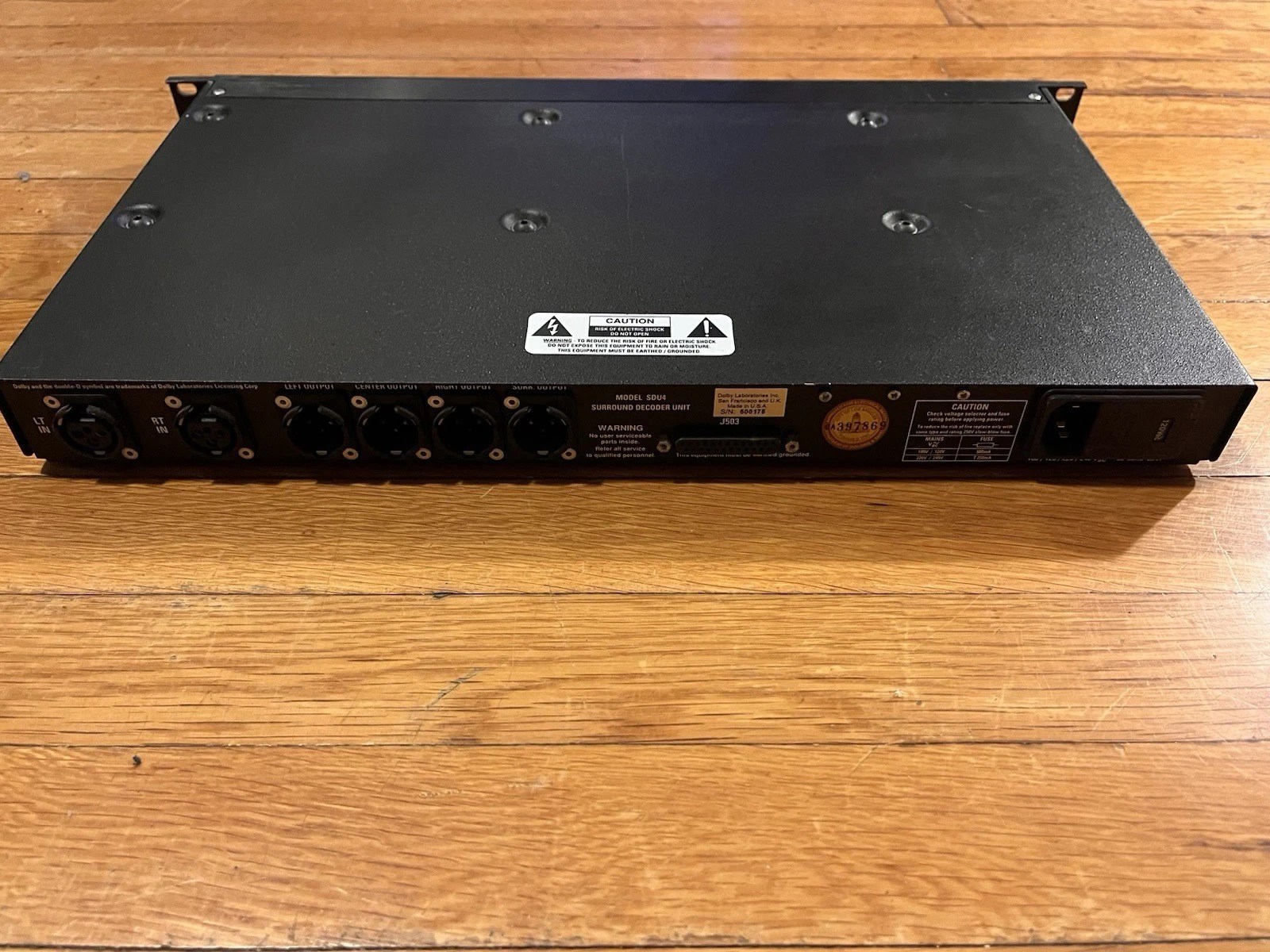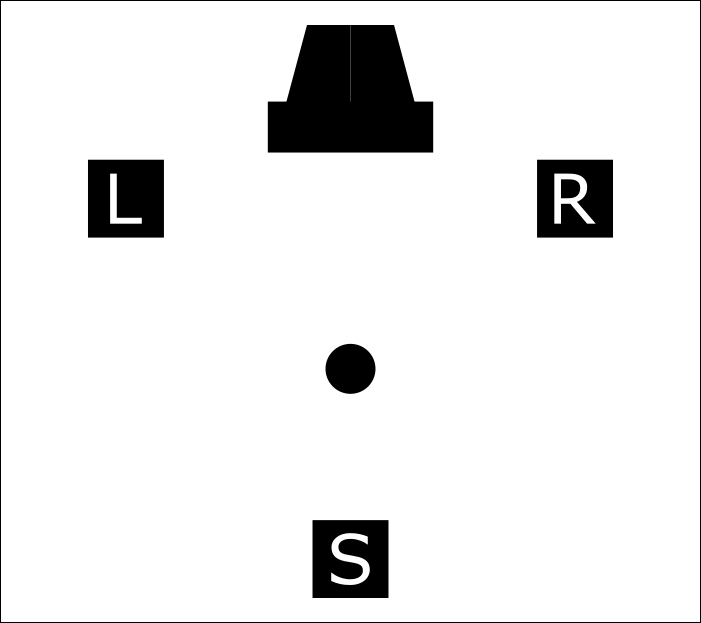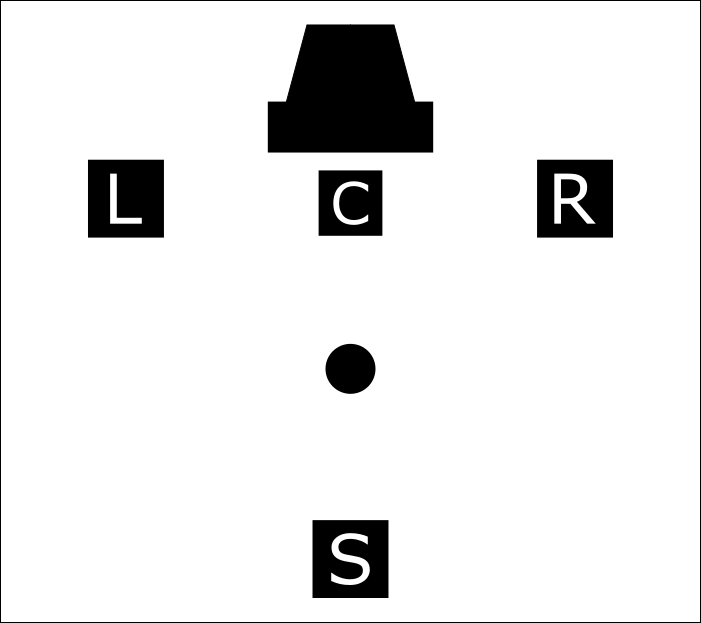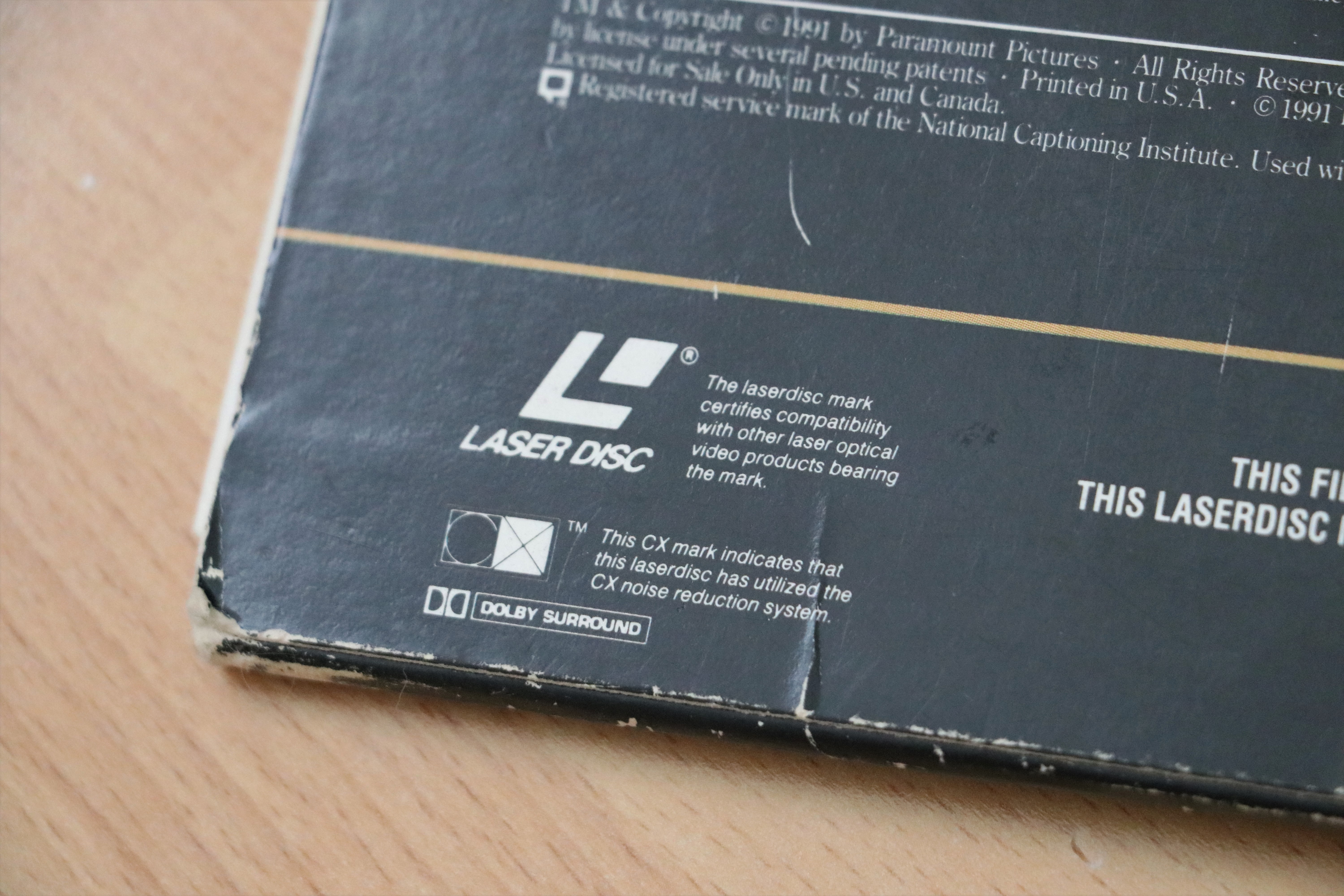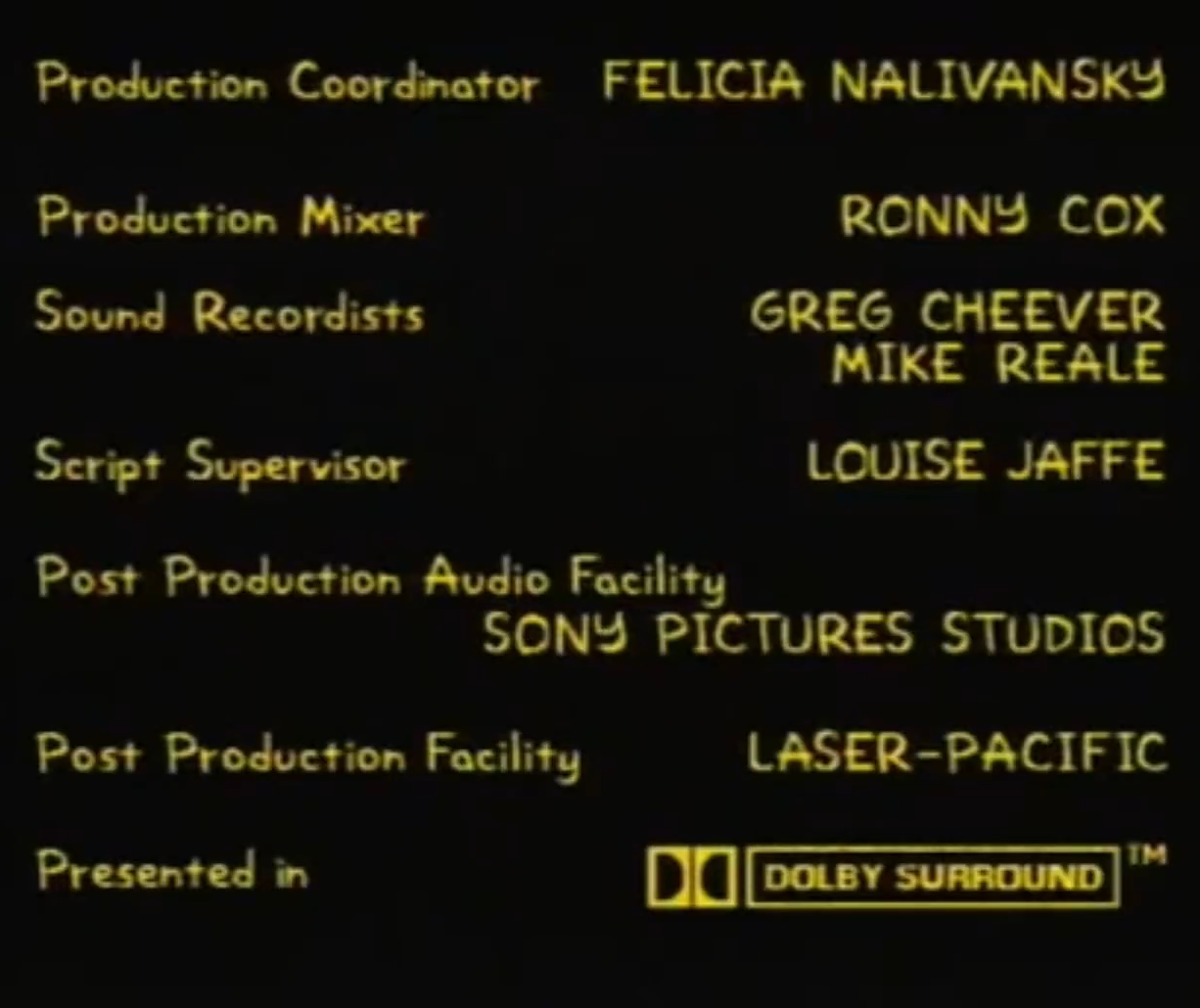Analog Surround Sound Was Everywhere, But You Probably Didn’t Notice
-
Analog Surround Sound Was Everywhere, But You Probably Didn’t Notice
These days, most of the media we consume is digital. We still watch movies and TV shows, but they’re all packaged in digital files that cram in many millions of pixels and as many audio channels as we could possibly desire.
Back in the day, though, engineering limitations meant that media on film or tape were limited to analog stereo audio at best. And yet, the masterminds at Dolby were able to create a surround sound format that could operate within those very limitations, turning two channels in to four. What started out as a cinematic format would bring surround sound to the home—all the way back in 1982!
From The Silver Screen
Stereo optical sound tracks can be seen on the right of this scan of a 35 mm film print. On the far left is the SDDS digital audio track in blue, with the Dolby Digital audio track visible in between the sprocket holes. Modern film prints often include multiple audio formats like this so a single print can be sent to a wide range of cinemas, whatever their equipment. Credit: CC BY-SA 3.0
Dolby’s surround sound efforts were not initially aimed at the home, but at the cinema. Classically, movies were distributed on 35 mm film with a mono soundtrack encoded optically alongside the image frames themselves, with an upper frequency limit usually topping out at around 12 kHz. By the latter half of the 20th century, this was considered quite poor compared to the much richer stereo sound that filmgoers would otherwise be used to from media such as vinyl records or tape systems. A great deal of research and development was pursued by the industry, with all manner of alternative formats envisaged to make stereo sound viable for movie theatres.Dolby’s solution was to team up with Kodak, finding a way to squeeze two optical audio tracks into the space where there was only one previously. Dolby’s well-developed noise reduction techniques came in handy in this regard, making the most of the lesser dynamic range available in the compressed space. In 1976, the technology became known as Dolby Stereo, or Dolby SVA, for Stereo Variable Area—the latter referring to the fact that the sound amplitude was encoded by variations in the area of transparency in the film’s audio track.
Dolby had successfully figured out how to distribute full stereo audio with 35 mm film prints. However, the work didn’t stop there. By applying similar techniques to those used in the burgeoning quadrophonic sound market, Dolby was able to create a rudimentary analog surround sound system. This was achieved with the use of a phase-matrix system, which could encode four channels into two stereo channels—left, right, center, and surround, with the latter sitting behind the viewer. A decoder would then split them back out to four channels for playback. This was achieved in a way that allowed the same stereo audio to be played back on regular stereo or mono systems without adding noticeable interference or noise.
A Dolby SDU4 decoder, as typically used in mixing and production of Dolby Surround content. Credit: via eBayNote the two channel inputs – L and R – and outputs for all four channels – L, R, C, and S. Credit: via eBay
In Dolby’s system, when producing the stereo soundtrack for a film print, the encoder would deliver audio for the left speaker directly to the left channel (L), and audio for the right speaker directly to the right channel (R). The center (C) speaker audio would be fed to both left and right channels equally, albeit attenuated by 3 dB. As for the surround (S) speaker audio, this would be attenuated by 3 dB, bandpassed from 100 Hz to 7 kHz, and then routed to the left and right channels, but with a phase shift of +90 degrees and -90 degrees, respectively. This method meant systems with only stereo or mono playback could play the same audio seamlessly as a two-channel or single-channel mix without issue. The surround content would cancel out, and the viewer would just get a regular stereo or mono output.This method created a stereo recording which could then be decoded back into four channels, albeit not completely discretely—you weren’t getting four distinct channels, so much as two distinct channels with a center and surround channel derived from them with limited separation. In particular, the center channel was often used to deliver dialogue as if it was coming straight out of the screen, while the surround channel was used for more diffuse effects.
Dolby’s cinema audio decoders worked by using some basic logic circuitry to give priority to the channels that had the highest signal level by attenuating the others slightly, which created some additional separation. A time delay of up to 100 ms was also used on the surround channel installed behind the viewer. This ensured that sound leakage from the the left and right channels didn’t confuse the viewer by appearing to come from behind, thanks to the precedence effect—where the human auditory system perceives direction of a sound based on the first arriving waveform.
Bringing It Home
Dolby Surround decoders did not provide a center channel, instead just offering L, R, and S. Credit: author
Dolby’s system was designed for cinema use, but it was by no means limited to such facilities. By 1982, with VHS and Betamax video cassettes started offering Hi-Fi stereo sound, it became entirely possible to deliver the same experience to home viewers in exactly the same way. This actually eased production of home releases for movie studios, which could simply reuse their existing stereo mixdown from the theatrical release. This technology was marketed as Dolby Surround. It came with some simplifications, using only passive decoding and most notably eliminating the center channel. This allowed home decoders to be cheaper, instead just turning the stereo audio into left, right, and a rear surround channel. The latter channel was still limited to 7 kHz, and was recovered by taking the difference of the left and right channels. This only provided separation of as little as 3dB between the surround and other channels.
Dolby Pro Logic decoders performed more like the original cinema decoders, and offered the center channel as well.
Things would improve just a few years later in 1987, with the advent of Dolby Pro Logic decoders. These used so-called “steering logic” that was more similar to the decoders used in original theatre implementations. This involved decoding the stereo tracks into four channels, and monitoring the dominant prevailing direction of the sound. Based on this, the amplifiers for each of the four channels (L,R, C, S) would be varied to create greater separation of up to 30 dB between channels. For example, if the sound was loudest on the left channel, the other channels might have their output lowered to emphasize the effect. This method involved careful control of the amplifiers to ensure total output levels remained relatively constant to avoid audible discontinuities. Dolby would continue to iterate on the system, later developing Pro Logic II decoding in 2000. This was designed to scale Dolby Surround content to suit 5.1 channel systems that were becoming popular with the rise of DVD and more advanced home theatre systems. Pro Logic IIx would follow soon after, doing the same but with 6.1 and 7.1 systems.
Stereo-capable formats like Laserdisc often featured Dolby Surround encoding on releases. Credit: Dillan Payne, CC BY-SA 2.0
Dolby’s engineering trick was intended to make multi-channel surround sound possible in an economically and technically viable way, for both cinemas and home viewers alike. It largely succeeded, particularly because of its all-around compatibility. Movie studios and TV stations were able to sell or broadcast Dolby Surround content perfectly easily without impacting the larger install base of viewers that only had mono or stereo speaker setups. The only requirement was to spend some extra time finessing the mix at the encoding stage, something most were already doing for theatrical releases anyway. Many people never realized that their VHS tapes or Laserdiscs had surround sound capability, because they never invested in a decoder and a multi-speaker setup at home. A huge range of home media came complete with surround content from the 1980s onwards, but a lot of consumers didn’t notice.
If you ever wondered how The Simpsons was broadcast in surround, now you know. Credit: screenshot
Matrix decoding systems like Dolby Surround eventually fell out of style as technology moved on. With the advent of the DVD and other more contemporary digital formats, it became very simple to simply include extra audio channels in the media itself. There was no need to try and mix four down to two channels and then expand them back out—you could just include four, five, or even more audio channels right in the original content. This had the benefit of providing complete channel separation. There was no decoding process that would leave your surround channels with content from other channels in them.Dolby Surround is one of those fun technologies from yesteryear. It reminds us that a bit of maths and creativity can enable impressive feats amidst even quite restrictive technological limitations. We might not have to work that way anymore, but it’s always instructive to learn these lessons from our recent past.
